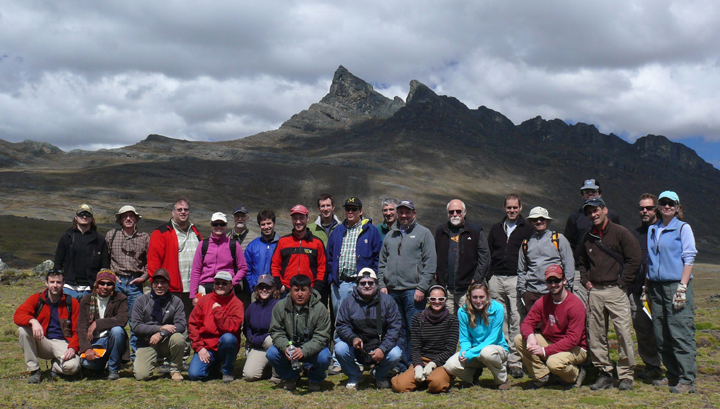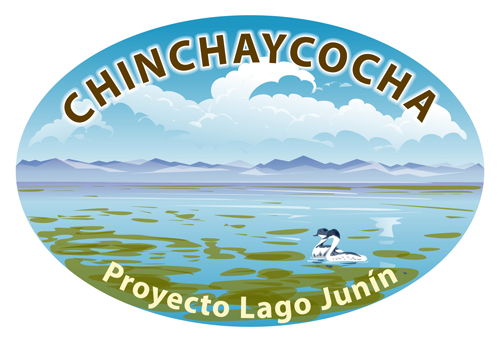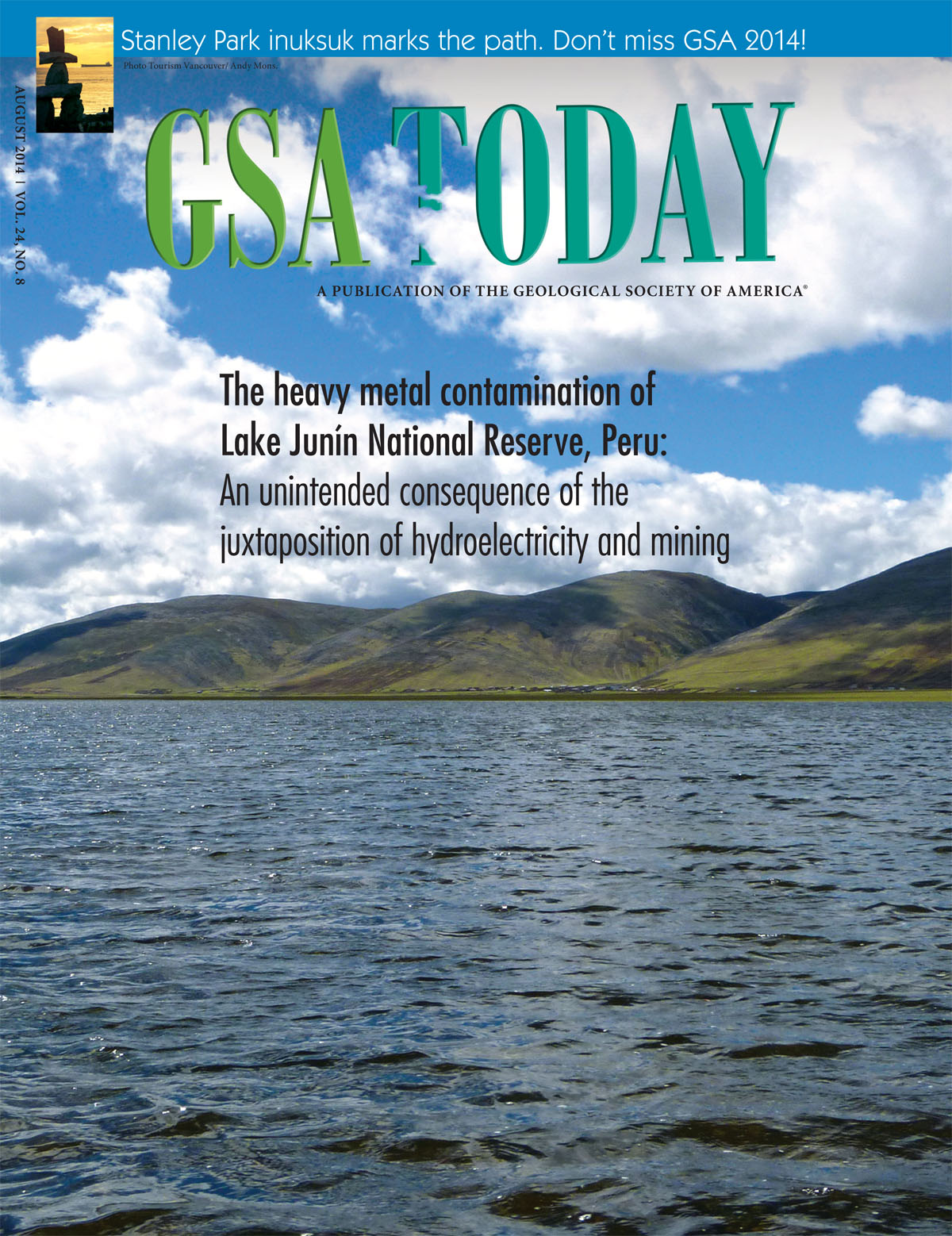 |
||||||||||||||
|
|
||||||||||||||
|
Lake Junin Deep Drilling Project - Peru
|
 |
|
|
International Continental Drilling Program (ICDP) sponsored workshop - June 2011. Deep Drilling of Lake Junin, Peru: Tropical Records of Glaciation, Climate Change, and Magnetic Field Variations Spanning the Late Quaternary Collaborative Research with Donald Rodbell (Union College), Pedro Tapia (Universidad Peruana Cayetano Heredia, Lima, Peru), Joe Stoner (Oregan State University), David McGee (Massachusetts Institute of Technology), Mark Bush (Florida Institute of Technology), and Lake Junin Working Group (see 2011 workshop report). For more information see the ICDP project page and LaCore Facebook page (Proyecto Lago Junín). Lake Junin, located at ~4100 m asl in the inner-tropics of the Southern Hemisphere, is a prime target for drilling because it contains a thick (>200 m) sediment package deposited at a high rate (0.2 to 1.0 mm yr-1). Moraine mapping coupled with cosmogenic radionuclide dating indicate that paleoglaciers reached the lake edge, but have not overridden the lake in one million years, or more. Lake Junin is thus one of the few lakes in the tropical Andes that predates the maximum extent of glaciation and is in a geomorphic position to record the waxing and waning of glaciers in nearby cordillera. The lake also contains ideal sediments for multiproxy analysis that can be reliably dated using both the radiocarbon and U-Th methods. The oxygen isotopic composition of marl and ostracod carapaces recovered in multiple preliminary cores covering the last 50 ka demonstrate that the d18O of authigenic calcite primarily records the isotopic composition of precipitation and secondarily the degree of evaporative enrichment of lake water. Lake Junín contains a continuous record of tropical hydroclimate over interglacial and interstadial intervals for much of the past several hundred thousand years that both complements and significantly extends stable isotope records from regional ice cores and speleothems.
Publications resulting from this work include The heavy metal Contamination of Lake Junin National Reserve, Peru: An Unintended Consequence of the Juxtaposition of Hydroelectricity and Mining. Hydraulic engineering is increasingly relied upon to provide the necessary dry-season discharge for Peru's hydroelectricity generation. Redirecting stream flow can yield unintended consequences, however, and here we document the wholesale contamination of the Lake Junín National Reserve by acid mine drainage from the Cerro de Pasco mining district. Since construction of the Upamayo Dam in 1932, the Río (river) San Juan, which drains the Cerro de Pasco region, has been seasonally redirected into Lake Junín. As a result, the upper several decimeters of sediment in the lake contain peak concentrations of Cu, Zn, and Pb of ~6000 ppm, ~50,000 ppm, and ~2000 ppm, respectively, with the latter two greatly exceeding the United States Environmental Protection Agency (EPA) limits for the entire 150 km2 lake basin. That the source of the contamination to Lake Junín is acid mine drainage from Cerro de Pasco is supported by spatial gradients in metal concentrations, authigenic calcite (marl) concentrations, and the isotopic record of Junín water. Today, the upper 50 cm of sediment in Lake Junín contain ~60,400, 897,600, and 40,900 metric tons of Cu, Zn, and Pb, respectively, which is equivalent to ~5.1 years' worth of Zn extraction and ~0.7 years' worth of Pb extraction from mining operations at Cerro de Pasco at current rates.
A 2,300-Year-Long Annually Resolved Record of the South American Summer Monsoon from the Peruvian Andes. Decadal and centennial mean state changes in South American summer monsoon (SASM) precipitation during the last 2,300 years are detailed using an annually resolved authigenic calcite record of precipitation d18O from a varved lake in the Central Peruvian Andes. This unique sediment record shows that d18 O peaked during the Medieval Climate Anomaly (MCA) from A.D. 900 to 1100, providing evidence that the SASM weakened considerably during this period. Minimum d18O values occurred during the Little Ice Age (LIA) between A.D. 1400 and 1820, reflecting a prolonged intensification of the SASM that was regionally synchronous. After the LIA, d18O increased rapidly, particularly during the current warm period (CWP; A.D. 1900 to present), indicating a return to reduced SASM precipitation that was more abrupt and sustained than the onset of the MCA. Diminished SASM precipitation during the MCA and CWP tracks reconstructed Northern Hemisphere and North Atlantic warming and a northward displacement of the Intertropical Convergence Zone (ITCZ) over the Atlantic, and likely the Pacific. Intensified SASM precipitation during the LIA follows reconstructed Northern Hemisphere and North Atlantic cooling, El Nino-like warming in the Pacific, and a southward displacement of the ITCZ over both oceans. These results suggest that SASM mean state changes are sensitive to ITCZ variability as mediated by Western Hemisphere tropical sea surface temperatures, particularly in the Atlantic. Continued Northern Hemisphere and North Atlantic warming may therefore help perpetuate the recent reductions in SASM precipitation that characterize the last 100 years, which would negatively impact Andean water resources. |
|

